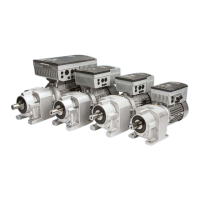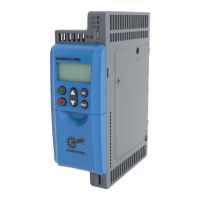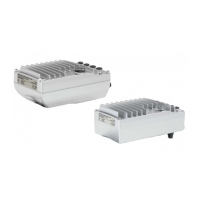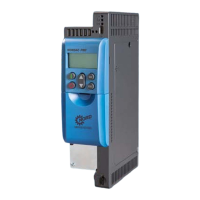2 Assembly and installation
BU 0200 en-3118 79
Pos: 17 2.19 / Anleit ungen/ Elek troni k/FU un d Start er/2. Montag e und Ins tallati on/AT EX un d EAC EX (S K 1xxE, SK 200E)/Maximale Ausgangsspannung und Drehmomenten-Red uzier ung - ATEX [S K 1x0E, SK 2 xxE] @ 1\mod_1342604992050_388.docx @ 34130 @ 4 @ 1
2.6.1.3 Maximum output voltage and torque reduction
As the maximum achievable output voltage depends on the pulse frequency to be set, in some cases
the torque which is specified in document B1091-1
must be reduced for values above the rated pulse
frequency of 6 kHz.
For F
pulse
> 6 kHz: T
reduction
[%] = 1 % * (F
pulse
– 6 kHz)
Therefore the maximum torque must be reduced by 1 % for each kHz pulse frequency above 6 kHz.
The torque limitation must be taken into account on reaching the break frequency. The same applies
for the degree of modulation (P218). With the factory setting of 100 %, in the field reduction range a
torque reduction of 5 % must be taken into account:
For P218 > 100 %: T
reduction
[%] = 1 % * (105 – P218)
Above a value of 105 %, no reduction needs to be taken into account. However, with values above
105 % no increase in torque above that of the Planning Guideline will be achieved. Under certain
circumstances, degrees of modulation > 100 % may lead to oscillations and motor vibration due to
increased harmonics.
At pulse frequencies above 6 kHz (400 V devices) or 8 kHz (230 V) devices, the reduction in power must be
taken into account for the design of the drive unit.
If parameter (P218) is set to < 105 %, the derating of the degree of modulation must be taken into account in the
field reduction range.
Pos: 172. 20 / Anl eit unge n/ Elek tro nik/F U u nd St arter/ 2. Mo ntag e u nd I nst allati on /AT EX u nd EAC EX ( SK 1x xE, SK 2 00E) /In betr ie bna hme- Hinweise - ATEX _01 [SK 1xx E, SK2xxE] @ 1\mod_1342604576541_388.docx @ 34106 @ 4 @ 1
2.6.1.4 Commissioning information
For Zone 22 the cable glands must at least comply with protection class IP55. Unused openings must
be closed with blank screw caps that are suitable for ATEX Zone 22 3D (generally IP 55).
The motors are protected from overheating by the device. This takes place by means of evaluation of
the motor PTC (TF) at the device side. In order to ensure this function, the PTC must be connected to
the intended input (Terminal 38/39).
Pos: 17 2.21 / Anlei tung en/ Ele ktr oni k/FU un d St art er/ 2. M ont age und Ins tal lati on/AT EX un d EAC E X (S K 1 xxE, SK 20 0E)/ Inbe tri ebn ah me-Hinweise - ATEX_02 [SK 1x0E, SK2xxE] @ 8\mod_1441028640125_388.docx @ 238454 @ 5 @ 1
In addition, care must be taken that a NORD motor from the motor list (P200) is set. If a standard
4-pole NORD motor or a motor from a different manufacturer is not used, the data for the motor
parameters ((P201) to (P208)) must be adjusted to those on the motor rating plate. The stator
resistance of the motor (see P208) must be measured by the inverter and at ambient temperature. In
order to do this, parameter P220 must be set to "1". In addition, the frequency inverter must be
parameterised so that the motor can be operated with a maximum speed of 3000 rpm. For a four-pole
motor, the "maximum frequency" must be set to a value which is smaller or equal to 100 Hz ((P105)
≤ 100). Here the maximum permissible output speed of the gear unit must be observed. In addition,
the monitoring "I²t-Motor" (Parameter (P535) / (P533)) must be switched on and the pulse frequency
set to between 4 kHz and 6 kHz.

